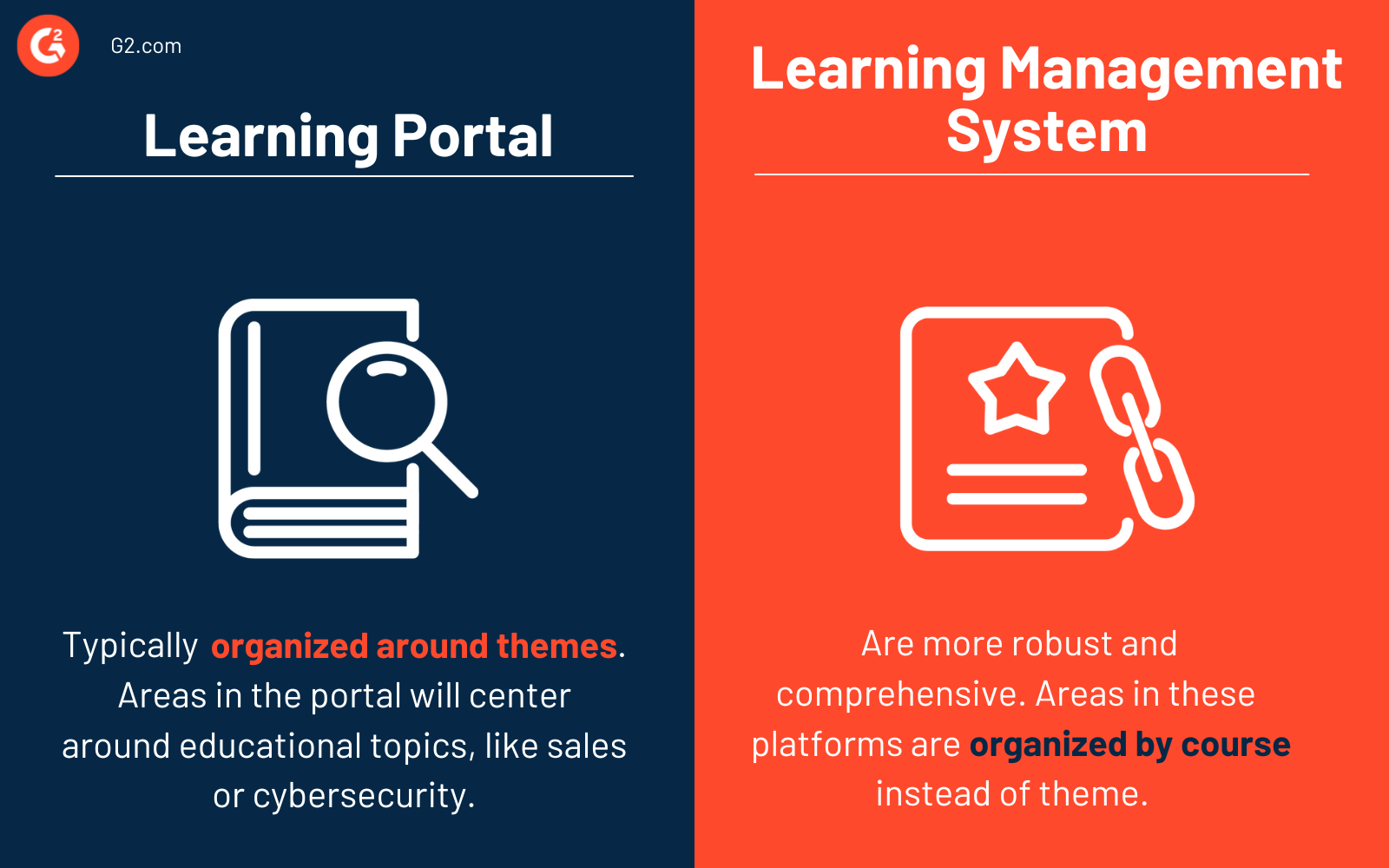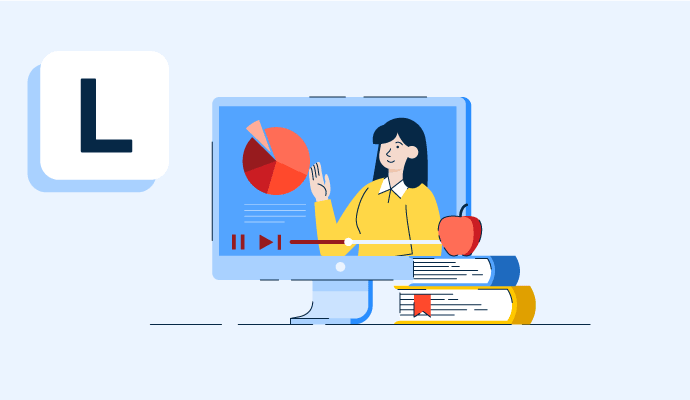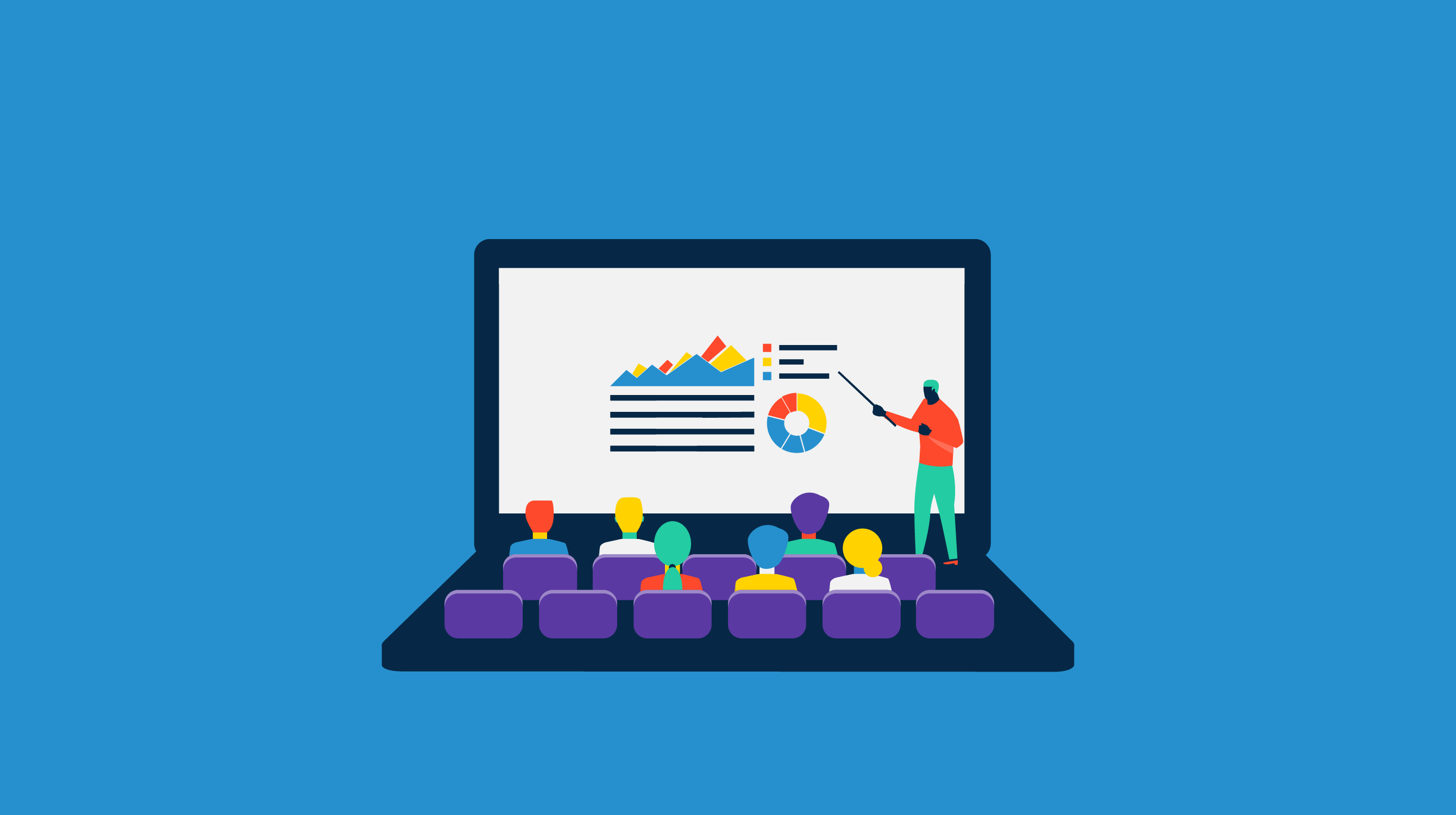What is a learning portal?
A learning portal is a website or online platform that gives employees access to training materials, courses, and tools. It serves as a hub for learners to upskill or engage in required or voluntary learning tasks.
Commonly used in corporate training, professional development, and educational settings, the learning portal is considered a more learner-centric version of a learning management system (LMS). These portals let users access educational videos, quizzes to gauge comprehension, and progress bars to track completion.
Companies or learning and development teams often create their courses directly in their learning portal, but sometimes they use dedicated course authoring software. These tools let teams build engaging multimedia content for training, which they can opt to publish to third-party learning portals.
Basic elements of a learning portal
A learning portal delivers educational content to an organization’s employees. Some elements common to most learning portals include:
- Course catalog. A learning portal contains an easy-to-use library of courses and learning materials, like documents or slide decks. These items have labels and categories, so they’re easy to find.
- Assessments. These platforms offer tools to create and administer tests or quizzes to check learners’ progress. The tools make it easy to differentiate learning for various learning styles.
- Gamification. Learning portals include elements of gamification, like points, rewards, and badges, to keep learners engaged and encourage commitment. Some also use a leaderboard to encourage friendly competition between users.
- Reporting and analytics. Learning portals let users and learning and development teams track learning engagement, achievement, and progress. They can view, generate, and share reports.
- Customization. Organizations can customize the learning portal with colors, fonts, and logos that fit their brand identity. They can also customize content to align with the company’s vision and mission.
Benefits of learning portals
Learning portals have clear benefits for employees. They can learn at their own pace from anywhere and engage with multimedia content. But learning portals also offer advantages to organizations, including:
- Cost-effectiveness. Delivering instruction through learning portals saves money over traditional in-person professional development with corporate trainers. Companies save on travel costs and reduce the need for physical resources.
- Better learning outcomes. Learning portals allow employees to learn at their own pace and revisit challenging concepts. These platforms deliver information in small, engaging chunks to hold the learner’s attention and improve retention and completion rates.
- Scalability. Learning portals are suitable for a company of any size and adjustable as a company scales. The company can expand its course catalog and accommodate new learners based on employees' needs.
Learning portal best practices
A learning portal provides employees with growth opportunities to improve their skills, achieve upward mobility, and feel more satisfied with their careers. Organizations that offer ongoing training generally notice improved retention and increased productivity and efficiency. To achieve these outcomes, companies should:
- Understand employees’ learning styles and preferences. Each person learns differently. While videos might appeal to some, texts and articles could work better for others. Organizations should survey employees about how they learn best.
- Focus on design. A better user interface (UI) design makes using the learning portal more appealing to employees. Incorporating brand colors, engaging images and illustrations, and layouts that follow a visual hierarchy creates a pleasant user experience (UX) and encourages platform adoption. Teams should strive for clarity and simplicity in design to help users focus.
- Provide support. Learners who get feedback have better learning outcomes. Companies should allow employees to see the correct answers and explanations on practice quizzes. The company should also include links to additional resources when possible and offer a way for learners to ask questions.
Learning portal vs. learning management system
The terms learning portal and learning management system are often used interchangeably, but they have clear differences.

A learning portal is typically organized around themes. For example, if an employee wants to improve their sales calls, they could access that portal area. Providers create portals with content management systems (CMS) to get customizable design options. It’s also often more agile and cost-effective.
A learning management system is more robust and comprehensive. These platforms are typically organized by course instead of theme. They boast more integrations and features, so these systems often have a higher price tag.
Ultimately, a learning portal is a more flexible, learner-centric solution, making it easy for learners to complete the desired training in a central hub. An LMS is a more comprehensive solution for administrators and instructors to create, track, and assess learning tasks.
Looking to help your employees reach the next level? Learn how a corporate LMS manages training programs for onboarding, development, and compliance.

Kelly Fiorini
Kelly Fiorini is a freelance writer for G2. After ten years as a teacher, Kelly now creates content for mostly B2B SaaS clients. In her free time, she’s usually reading, spilling coffee, walking her dogs, and trying to keep her plants alive. Kelly received her Bachelor of Arts in English from the University of Notre Dame and her Master of Arts in Teaching from the University of Louisville.

